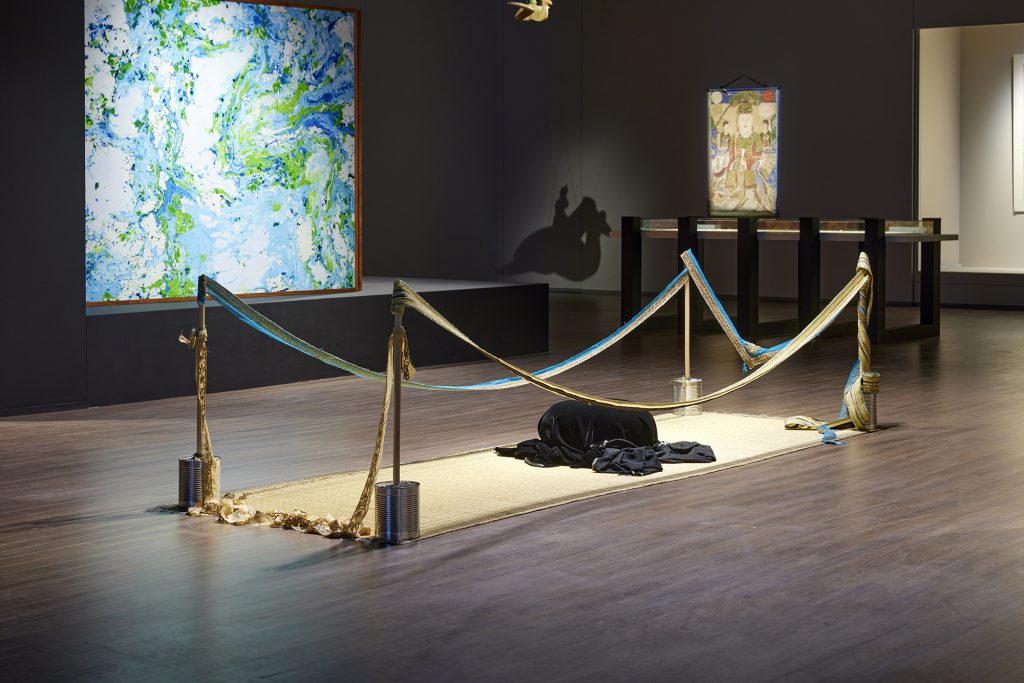
Trajal Harrell, Sister or He Buried theBody, 2021 Installation: woven mats, passementerie Dimensions variable Co-commissioned by the 13th Gwangju Biennale; Centre National de la Danse, Paris; Moscow Garage; and Schauspielhaus, Zürich
Trajal Harrell, Sister or He Buried theBody, 2021 Installation: woven mats, passementerie Dimensions variable Co-commissioned by the 13th Gwangju Biennale; Centre National de la Danse, Paris; Moscow Garage; and Schauspielhaus, Zürich

Trajal Harrell gained global recognition for creating a series of works that bring together the tradition of voguing with early postmodern dance. Since 2013, he has looked closely at Japanese butoh dance and its founder Tatsumi Hijikata to develop works that combine a speculative remapping of the history of contemporary dance and composition. Drawing on the mythical origins of butoh and its elevation of an aesthetic of death and decay, Harrell honors Hijikata’s aim for butoh “to escape itself,” to defy aesthetic categorization and operate at odds with the historical stances of modern and postmodern dance.
Harrell’s solo performance advances many of his long-standing artistic discourses while delving deeper into Hijikata’s legacy, his speculative associations with African-American choreographer Katherine Dunham and her seminal research on Haitian Vodou, the death of Hijikata’s sister, and his attempt to archive her dead body in his own performance. Hijikata shared a studio with Dunham before he made his first butoh piece, leading to Harrell’s speculation that Dunham could be, in his words, “the long-lost mother of butoh.” Presented and performed on a makeshift runway made of woven grass mats enclosed by a line of delicate passementerie, the work is strongly inspired by the aesthetics of Japanese folk theater that evolved into the kabuki tradition. Butoh both revolted against and developed from kabuki, as Hijikata encouraged the repurposing of traditional Japanese models of performance as a means of breaking them.
Confirming butoh’s relationship with death, Hijikata spoke resonantly of his dead sister dancing through his body, specifically by relating to her sexual body as it danced through his living one in exchange for money. Harrell’s Sister or He Buried the Body (2021) is an attempt to vogue Hijikata voguing his sister, an attempt to rerun and archive Hijikata’s sister’s story and Hijikata’s reperformance in his physical form through Harrell’s dancing body. The piece is also an accusation, given the possibility that the sister figure of Hijikata’s own mythology might be a disguised Dunham, Hijikata’s disguise of butoh history. In Hijikata’s words, “dead sister is my real teacher of butoh. We need to lesson hard with the dead constantly. We need to live together with the dead.”
Trajal Harrell, Sister or He Buried theBody, 2021 Installation: woven mats, passementerie Dimensions variable Co-commissioned by the 13th Gwangju Biennale; Centre National de la Danse, Paris; Moscow Garage; and Schauspielhaus, Zürich